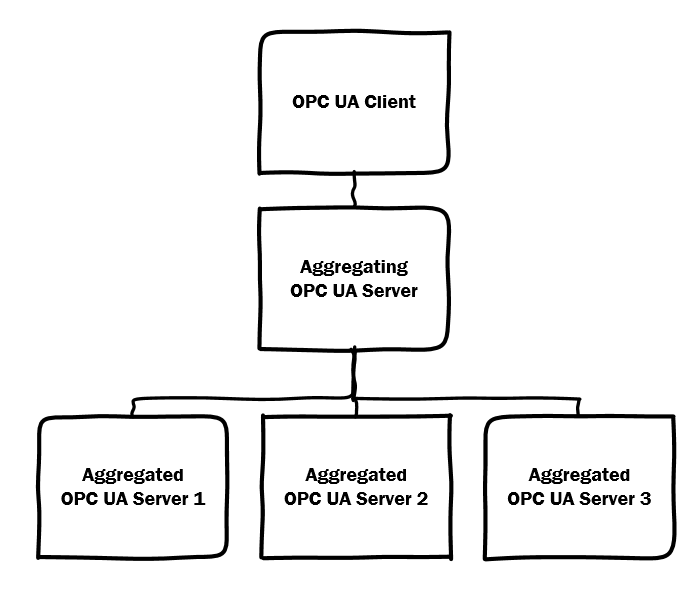Aggregating Server
Concept
Aggregating OPC UA servers act as proxies for one or more OPC UA servers. This means clients can access the Aggregating server and expect to get the same information as if they accessed the Aggregated server.

Apis supports 3 aggregating server patterns:
Replicating proxy
Selected namespaces of the aggregated OPC UA server(s) are replicated in Apis Hive, which means Apis Hive hosts a copy of the address space of the aggregated server. The data variables of the aggregated server are mirrored as Apis Hive items using OPC UA subscription, so that client subscriptions and read requests to replicated data variables are handled solely by Apis, without involving the aggregated server. History read requests to data variables are handled by Apis or the Aggregated server depending on configuration. Replicating proxy is implemented in Apis in a concept called Namespace Replication.
Federating proxy
The aggregating server maps multiple autonomous UA servers (or UA server namespaces) into a single federated UA server. There is no actual data replication between the aggregated UA servers and the proxy. All client calls are routed and forwarded to the underlying servers, and results / subscriptions are delivered back to the clients via the proxy.
Basic proxy
The aggregating server replicates data variables from the aggregating server using of OPC UA subscription. In this pattern, only data variables and their values are replicated. Metadata structures such as objects, object hierarchies and properties are not replicated in the aggregating server, and hence not accessible for the clients.